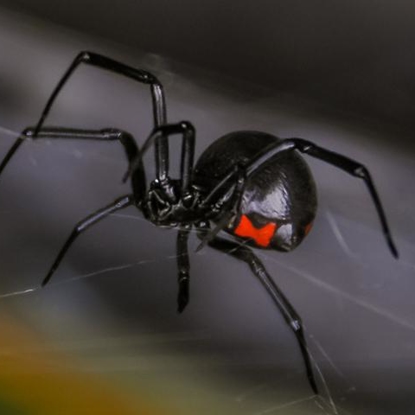
Spiders

About
Spiders have many eyes, eight legs, and two body parts. They come in a variety of sizes, shapes, and colors. Some are dangerous, and others are just annoying to have around. While spiders are common household pests, they shouldn’t be a common fixture in your home. Most species of spiders are nuisance spiders, meaning the venom they use to paralyze prey, is not strong enough to harm people. Nuisance spiders living in our area include wolf spiders, grass spiders, and house spiders. In the United States, there are two species of dangerous spiders- brown recluse spiders and black widow spiders. Care should be taken to avoid both species because their venom is strong enough to trigger health problems in people.
Spiders are predators and feed on insects and other spiders, helping to control populations of nuisance and dangerous pests. Yards or any outdoor spaces with a lot of insect activity are most attractive to spiders. Spiders like to live outside in quiet shelter places near their prey. Tall grasses, bushes, shrubs, trees, roof eaves, doorways, woodpiles, fallen trees, and areas under decks all make great hideouts for spiders. Spiders do find their way inside of homes and outbuildings usually while following their prey. Spiders move inside during the fall and winter months when their food sources become scarce after many insects have moved inside to overwinter. Inside spiders hide in dark, less-traveled areas like closets, basements, attics, under sinks, and under furniture.
Spider prevention tips: Trim shrubs and bushes back from the exterior of your home. Store woodpiles away from the outside of your home. Remove fallen trees, logs, and tree stumps from your property. Keep the grass in your yard cut short and cut back away from your home’s foundation. Maintain garden areas. Reduce points of entry into your home by sealing cracks in the foundation, exterior walls, roofline, and spaces around utilities entering into your home. Fix loose or torn screens.